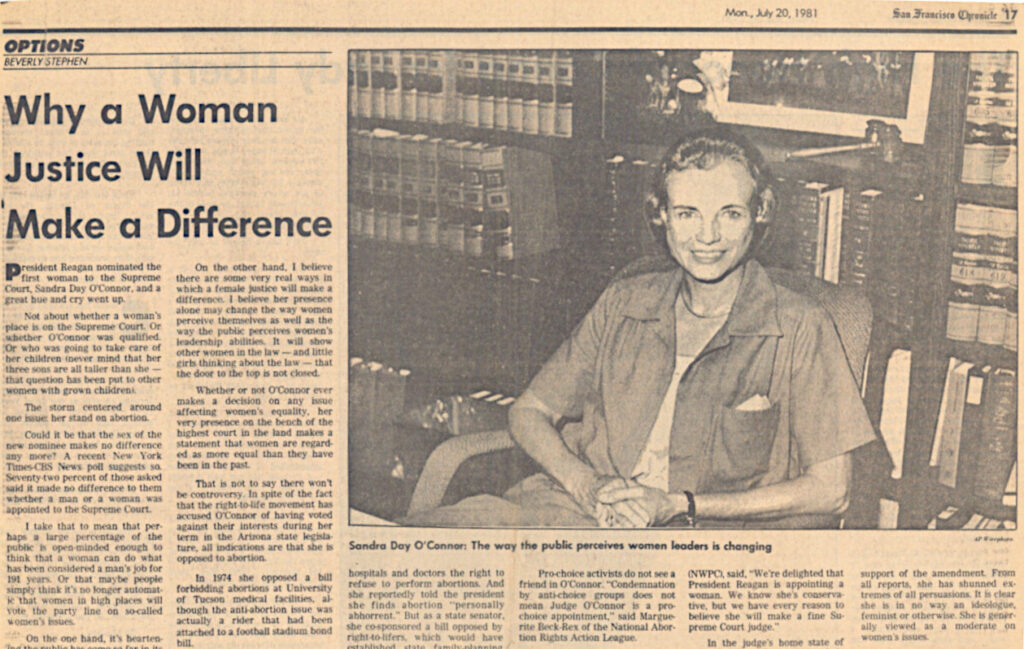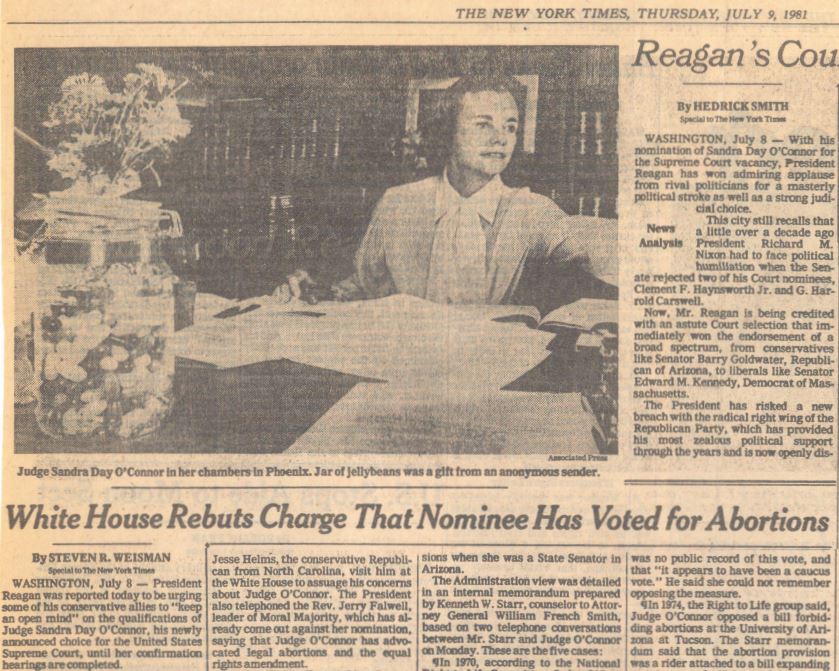Tough judge keeps cool in hearings
WASHINGTON – Sandra Day O’Connor, 51, wife, mother, lawyer, politician and judge, gave a polished performance last week as she took another step toward becoming the first woman associate justice of U.S. Supreme Court.
She appeared before the Senate Judiciary Committee for three days of hearings on her confirmation, something considered a foregone conclusion since July 7, when President Reagan nominated her. Nothing during the hearing altered that conclusion. There were few surprises.
Everyone knew from the start that most of the committee’s 18 members intended to support her. Everyone knew the only meaningful opposition to her would be voiced by anti-abortion lobbyists. They view with dismay her voting record on that issue as a member of the Arizona
Senate.
And even they knew that their pleas to reject her appointment would for the most part, go unheeded. What did surprise many was Judge O’Connor’s impeccable performance before the panel and before the bank of television lights, the horde of reporters and a national audience of millions.
She gave the impression with every answer that her words had been contemplated, researched and rehearsed. She did not make those infamous gaffes that all public figures dread – gaffes that often result in embarrassing headlines.
None of the senators, not even the “pro-lifers,” unnerved her. They got the answers she wanted to give – nothing more. At no time did she stutter, mumble or falter, or get angry or snappish. And she appeared to be tireless.
On Wednesday, the first day of the hearing, at 4:20 p.m. Sen. Dennis DeConcini, D-Ariz., suggested a recess to give Judge O’Connor a break. She told Committee Chairman Strom Thurmond, the 78-year-old South Carolina Republican, that if he wanted a recess, that would be fine with her, but she could keep going.


